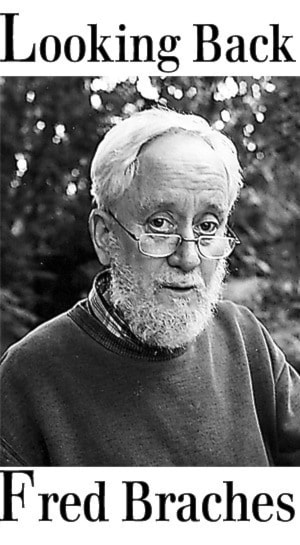The Whonnocks, after whom our historical community is named, were a Band of the Kwantlen First Nation.
Their chiefs in recorded times were Kolasten, followed by his son Basil, and later Chief Fidelle, who died around 1918.
Between Whonnock and Ruskin, the Lougheed Highway cuts through the old Whonnock Indian Reserve, but there is nothing left of the houses and the little church that once stood there.
First the village had been on the shore of the Fraser River. But when the railroad came in the 1880s, the houses were moved higher up the slope. Now everything is gone. Even the crosses on the little cemetery have weathered away and the names of those who were put to rest there are mostly forgotten.
In 1862, mainly to establish what land white settlers could claim for themselves, a member of the Columbia Detachment of the Royal Engineers surveyed the land to be reserved for the use of the Whonnocks.
Most of the reserve was rock and gravelly soil and quite unfit for cultivation. For that reason, the band continued to farm outside the reserve on better soil close to the mouth of the Stave River.
Soon they came into conflict with the new white owner of that land, and moved their fields to adjacent land as yet unclaimed by a white settler.
When Governor Douglas learned about the band’s predicament, he directed the Royal Engineers to plot a new reserve to include the land where the Whonnocks had started their new fields. This second reserve would be 160 acres – about twice as large as the original Whonnock reserve – and equivalent to the land granted to any white settler: a quarter section.
This reserve in today’s Ruskin would have covered the area from 98th Avenue south to the Fraser River between 280th and 284th streets.
However, the Royal Engineers never surveyed this land because in the following year the Columbia Detachment was disbanded and most of their number returned to England.
To avoid similar conflicts between native land users and claims by a rapidly growing number of white settlers, Gov. Douglas, just before his retirement in 1864, decided to let the tribes say what land they considered theirs, always respecting existing land claims of white settlers.
The latter already fully surrounded the Langley and Katzie reserves and other reserves down river. But Whonnock was one of the areas with only a few settlers where this could still be done.
Under Gov. Douglas’s plan, the Whonnock reserve would have grown to 2,000 acres, bordered to the north by Dewdney Trunk Road and to the south by the Fraser River, to the west by 272nd Street and to the east by 284th Street.
Even larger reserves were set out for the Matsqui and some other tribes further up the Fraser Valley.
These preemptive claims on behalf of the Native population did not sit well with the white settlers, and the plan was abandoned in 1868. That meant for the Whonnocks a return to the original reserve. Pleas from the band to recognize their need of arable land and the promised second reserve were willfully ignored and called “utterly incorrect,” although the instructions and a sketch map showed that their claim was legitimate.
A later request to expand the original reserve eastward along the Fraser was also rejected.
Finally, in 1874, the Whonnocks’ need for arable lands was recognized. By this time white settlers had taken up the land in Ruskin therefore a second Whonnock reserve was established on the western shore of the Stave River, together with other new reserve areas established in the Stave River delta for use by the Kwantlen.
This new Whonnock reserve on the Stave River took on a life of its own. Its best remembered inhabitants were the members of the large Cheer family, who were of Hawaiian and Kwantlen extraction, but with unconfirmed links to the Whonnocks.
In historical times, never more than about 35 people lived on the old reserve, and that number diminished over time. Diseases took their toll on the residents. The loss of arable land and, later, the loss of direct access to the waterfront may also have contributed to the departure of some residents, including members of the Fidelle family. When Chief Fidelle died around 1918, the only residents still living on the original Whonnock reserve were members of his immediate family.
The old Whonnock reserve continued its slide into irrelevance and abandonment. The last lonely Whonnock still living on the old reserve, James Fidelle, a bachelor all his life, died in 1951 in a fire that destroyed his house.
Fred Braches is a local historian who lives in Whonnock.
